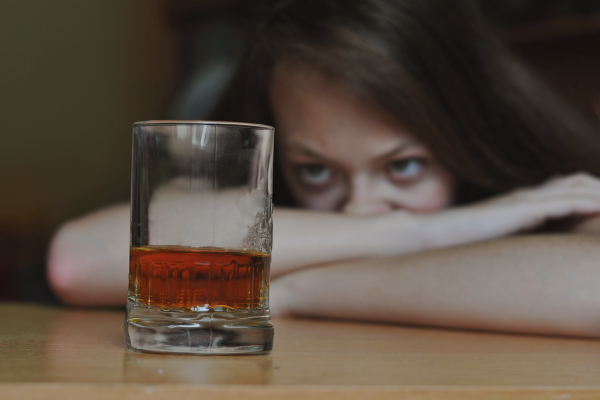Anxiety And Addiction
For many in our community, addiction coexists alongside an anxiety disorder. Maybe one precluded the other, or maybe they developed concurrently. Regardless, this can often add additional shame and a sense of hopelessness. This is a topic we’ll talk more about going forward so today my friend Adam Jablin stopped by to talk about his addiction story and how it related to his struggles with anxiety, both then and now. Adam speaks openly about his struggles with addiction and is an excellent advocate for those struggling with this problem.
If you are struggling with an anxiety problem and also find yourself struggling with dependency on alcohol or drugs, this episode may help you see that you’re not broken and you’re not alone. I hope you find it helpful in some way.
Are You Subscribed To My Newsletter? Recovery tips. Updates on recovery resources. Encouragement. Inspiration. Empowerment. All delivered to your inbox! Subscribe here FREE. More Ways To Listen/Watch My Podcast: Listen on Apple Podcasts | Listen on Spotify | Listen on Amazon Music | Watch on YouTube Helpful Recovery Resources: My Books | FREE Resources | Courses and Workshops | Disordered (with Josh Fletcher)
Adam was abusing alcohol and drugs without ever understanding that he had an addiction problem. He was carrying a distorted idea of what an alcoholic looks like. That distortion needed to be shattered before he was able to point himself toward recover.
Adam says that his addiction struggles stemmed directly from anxiety and not being comfortable with himself and who he really was. He would use alcohol and drugs to numb his feelings and insecurity and fear and to build a false sense of bravado and confidence.
For some in our community, addiction might creep up on them slowly until one day they discover that they’re drinking or using other substances to self-medicate and to escape anxiety and fear. The realization that one has an addition problem can be so difficult because what was once one problem (anxiety) is suddenly two. It can lead people to feel hopeless and discouraged.
Adam describes having one “this is it” moment after another, making false promises to himself only to break them the moment his feelings of anxiety and insecurity surfaced.

For Adam, hitting the “I can’t do this anymore” moment came when he walked into an intervention staged by the people who love him and care about him. His friends and family arranged for him to go get help, yet Adam was – even in that moment – worried about how this would make him look. That insecurity and fear was still calling the shots, even when his loved ones were expressing concern for his health and his life.
When Adam went for help, he discovered what alcoholism really is. He learned that even functioning at what would seem to be a high level in life, he was an addict. He also learned that being an addict made him sick, it did not make him a bad person.
Adam described a cycle of addiction that mirrors the anxiety avoidance cycle. His addiction would argue with him and rationalize why it was OK for him to take a drink or use. This sounds curiously familiar to the way anxious fear will argue with you and convince you that avoidance – short term relief – is a really good idea and totally justified.
Knowing that he was an addict and understanding what that meant was not enough. Adam only got better when he adopted a completely different way of living. He had to change his behavior and DO things in a new way. The way out of his addiction – from a mechanical standpoint – was to try new ways in order to learn that he could still be OK even without the “shield” of alcohol protecting him. Again, we find parallels to the anxiety recovery process.
In much the same was as we can find life lessons that stay with us long after anxiety recovery, in the addiction community Adam tells us that “his dark past is his greatest asset”.
Adam talked about how his mentor and teacher helped him to view his situation in a way that helped him get out from under the shame of being an addict. Using the analogy of addiction as a fever – a symptom of something being wrong – treating addiction was just like lowering a fever. First we lower the fever, then we find out what caused that fever. My old therapist was fond of saying, “First, we stop the bleeding”. Being anxious, having an anxiety disorder, and being addicted to drugs or alcohol all come with shame and stigma. Seeing the condition as a symptom that needs to be treated, rather than as a defect, is a way to find self-compassion and self-love that can get us out from under that shame and stigma.
In both addiction recovery and anxiety recovery, EVERYTHING is hard. Not drinking is hard. So is drinking. Facing what you fear is hard. So is NOT facing what you fear. We must choose our hard. We can suffer in the right direction.
To find Adam Jablin online:
Website: adamjablin.com
Instagram: @adamjablin
LinkedIN: https://www.linkedin.com/in/adam-jablin-9548646/
Are You Subscribed To My Newsletter?
Recovery tips. Updates on recovery resources. Encouragement. Inspiration. Empowerment. All delivered to your inbox! Subscribe here FREE.
Helpful Recovery Resources:
My Books | FREE Resources | Courses and Workshops | Disordered (with Josh Fletcher) | Join My Instagram Subscriber Group
Podcast Intro/Outro Music: "Afterglow" by Ben Drake (With Permission)
